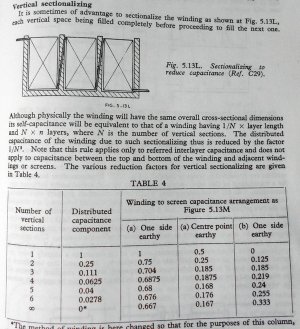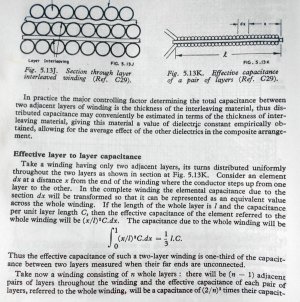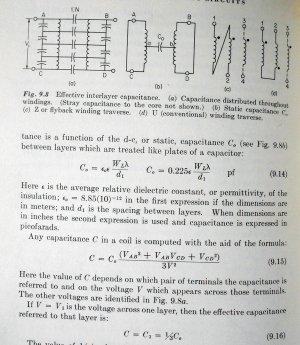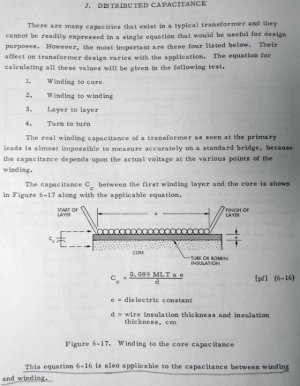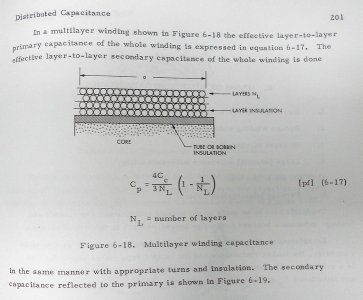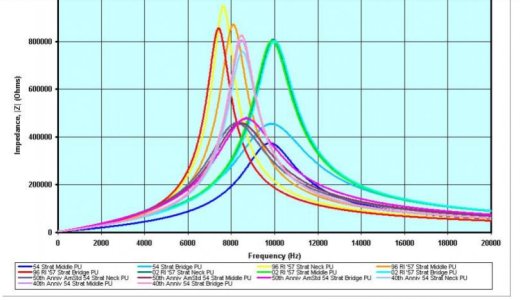Re: Can someone please explain inductance to me in simple terms?
Pico is right, I made it sound like using tape was as good as sectioning and that is incorrect and for that, i apologize.
There are two different things going on in that post, sectioning, and using tape to increase the distance between layers.
The tape thing will reduce capacitance, but not as effectively as sectioning.
The formulas for winding capacitance are quite cumbersome and can only give an approximation as to total C. In the end, the ears are the final judge.
Here is a look at an example of sectioning on a V72 input xfmr and a plate choke. The input transformer has 2 primaries and 4 secondaries. Original transformers used pre-wound discs that were slid over a phenolic bobbin, a process that was quite tedious.
On this rewind, we used 4 wires at a time to build up the secondaries while using spacers or the primaries, which were wound after the secondaries.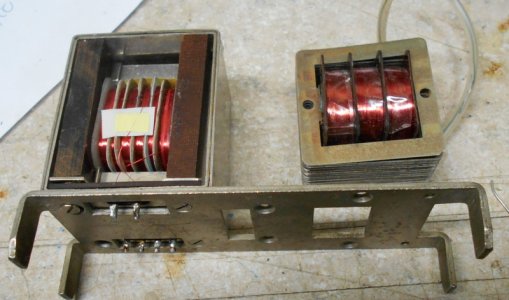
Pico is right, I made it sound like using tape was as good as sectioning and that is incorrect and for that, i apologize.
There are two different things going on in that post, sectioning, and using tape to increase the distance between layers.
The tape thing will reduce capacitance, but not as effectively as sectioning.
The formulas for winding capacitance are quite cumbersome and can only give an approximation as to total C. In the end, the ears are the final judge.
Here is a look at an example of sectioning on a V72 input xfmr and a plate choke. The input transformer has 2 primaries and 4 secondaries. Original transformers used pre-wound discs that were slid over a phenolic bobbin, a process that was quite tedious.
On this rewind, we used 4 wires at a time to build up the secondaries while using spacers or the primaries, which were wound after the secondaries.


